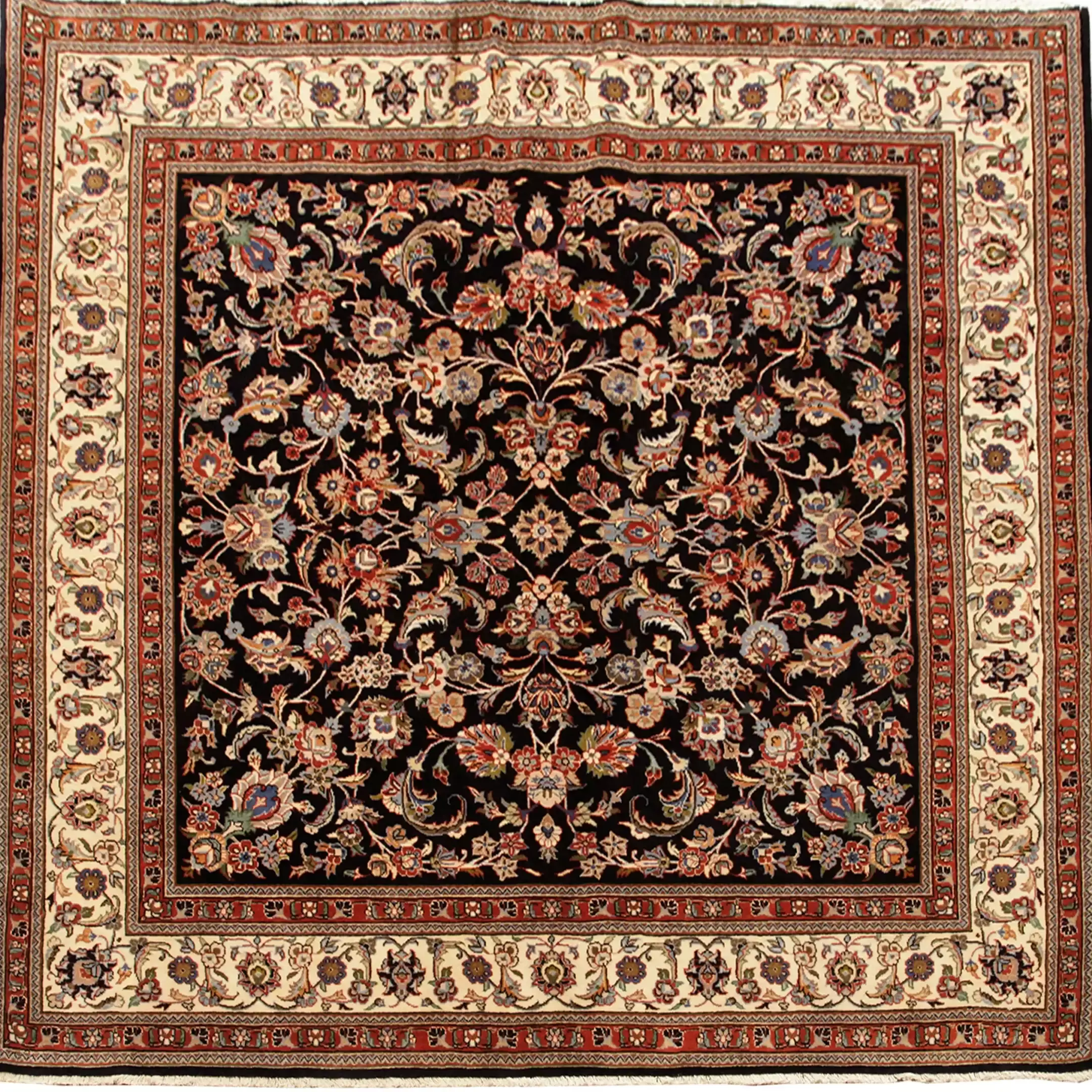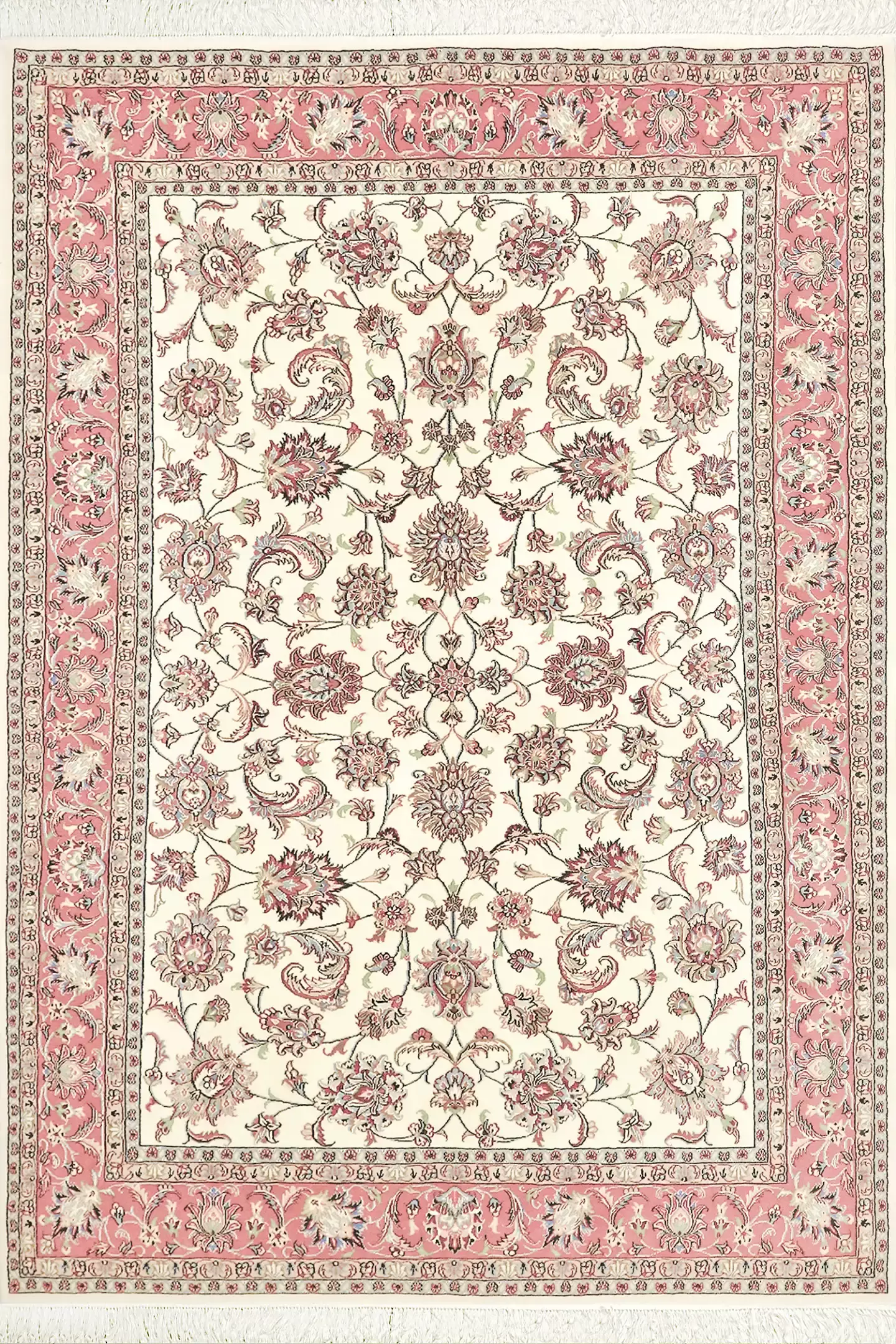Getting to know carpets with splash designs
One of the most common and popular Iranian carpet designs is the Afshan design. The texture of this design is common in some carpet weaving areas of Iran such as Khorasan and Isfahan. If we want to describe this carpet in one word, it should be said that Afshan carpet is full of twisted stems, flowers and leaves. In the following, we intend to introduce Iranian carpets in detail.
The meaning of the word Afshan
In Dehkhoda's dictionary, Afshan means scattered, scattered, diffused, scattered, scattered. Sprinkling in the art of book design is a practice that is used to decorate the pages of books and manuscripts in such a way that the text or the border or the text and the border is decorated with gold and silver particles or other metallic materials. In the dictionary, the word "Afshan" is mentioned as one of the carpet weaving designs in which leaves, flowers and animals are scattered on its surface as the main motifs of the carpet. In the Kermani dialect, the same word has become Afshon and it is said to be a picture that has many flowers, bushes, and leaves. The people of Kermani call the hand-woven fabric woven with various combinations as Afshon carpet or Naqsh Afshon. In the book Farshnameh of Iran, it is stated that in Shah Abbasi's small and large flower sprinkling design, bouquets, blossoms, leaves and branches, and sometimes salimi and khataei or other images are scattered without continuity and at equal distances from each other and similar to each other. Text" has been leaked. In the Comprehensive History of Iranian Carpets by Ahmad Daneshgar, the spreading design is defined as follows: leaves, flowers, birds, and animals are spread on the floor as motifs of the carpet. Flowers and leaves are the main motifs of this pattern, although they are scattered separately in the background of the carpet, but the homogeneity and harmony of the colors make them look like parts of a beautiful collection.
Fashan design in the carpet and its background
Afshan Shah Abbasi's designs are woven using Khatay motifs and there are less Islamic motifs. It may be said that the use of this type of composition in the decorative arts of Khorasan dates back to the Timurid period. The entrance gates of the Goharshad Mosque in Mashhad are decorated with Khatai motifs, and in these designs, the tile artist has elegantly decorated all the tiles with Khatai scrolls and artichoke flowers. This type of composition has been observed in fewer monuments of Iranian-Islamic art index. The composition used in these heads can be considered as the beginning of Shah Abbasi's carpet designs in Khorasan, carpets that have attracted the attention of most Western researchers and experts.
Description of Afshan Shah Abbasi carpets according to Arthur Pope
Arthur Pope, with his detailed look at Iranian art, describes these carpets in the sixth volume of his series on Iranian art as follows:... in the 10th and 11th centuries of Hijri, one type of carpet was superior to other types, the lacquered background of which is sometimes called The burgundy or ruby-red spectrums change and occasionally fade to pink, with a wide enclosed border that is emerald-green in earlier examples and bluish-green in later examples; Because the skill in obtaining this difficult color tends to decline. Its prominent paintings mainly include large Shah Abbasi-like flowers based on water lotus, centaury flower and imaginary and complex leaf shapes, all of which have different but ancient origins. Writing the complete history of these flowers of Shah Abbasi involves the study of decorative art from Egypt to China. These huge flowers are placed on the winding stem and are often so delicate that they seem more or less invisible, and they form the main structural base that distributes the roles, but they themselves are so understated that they are almost invisible. Their shape is the same as the cosmic tree with symmetrical twists on both sides of the central axis... Cloud motifs have been used in the group of old carpets with such an understanding of art that almost no other equivalent type can be found, even in the patterns of northwest carpets. Iran.
The principles and rules of Naqsh Afshan design
It often seems that the design of Afshan comes from the decoration of manuscripts and it is an irregular design without principles and its requirement is that the designer colors a number of Shah Abbasi flowers and scatters them on the surface of the carpet. If this is not the case and drawing this type of designs is one of the most difficult and legal designs of Iranian carpets. The width and breadth of the carpet design paper is a mistake that comes to life only with the creativity and intelligence of the designer artist in moving the circulation (spiral) and this circulation also has certain rules. The carpet designer should decorate the whole space of the design in a uniform manner with all kinds of large and small Khatay and Slimi motifs, so that the balance between the main elements can be observed. It should be noted that Khatai and Slimi motifs (Shah Abbasi flowers, mixed leaves, buds and Cloudy Slimis) are drawn in different sizes and all of them are connected to each other with Khatai circulations. The regular movement of the spiral arcs in different directions creates space for error elements in the carpet text, and cloud slimes are freely placed around the error patterns. A carpet designer can create a beautiful and original design by paying attention to the design rules and relying on his creativity, and this can be seen in the Afshan carpets of Mashhad from the Safavid era to the present day.

The most important feature of Afshan carpets
Afshan carpets have their own unique features that make it easy to distinguish it from other examples. These features include the following:
The most important feature of Afshan's designs is that these designs do not have a middle border, and the carpet text is decorated all over with the use of Khatai interwoven stems and all kinds of Shah Abbasi and Abbasi tulips, buds and leaves.
In the Afshan design, all the existing stems and images are related and interconnected, and from the beginning to the end of the design, it is in such a way that the designer did not cut the paper map and creates this connection between the different images. In fact, Afshan carpets have an all-over or one-half spread. Rarely, these carpets are designed with a quarter spread.
Another feature of Afshan's designs and motifs is that the flowers, leaves and buds in these carpets have no resemblance to natural flowers, and in fact, they are an abstract and deformed form of natural flowers.
Finally, the biggest feature of splash designs is that they make the environment in which they are used look big and open. The reason for this is that these carpets do not have elastic and fringe.
All kinds of carpets with splash designs
Afshan design is woven in hand-woven carpets in different types and shapes and various colors. The coloring in the Afashan carpet usually depends on the location of its texture; Because, as we know, different regions of Iran have their own colors in carpets. But in terms of design, depending on the type of flower used, in general, the types of designs or patterns of carpets can be considered as including the following:
Fashan Slimi
In this carpet, the dominant role is the twisting of slimy branches that fills the entire carpet. Sometimes, in Afshan Slimi rugs, the branches of Khatai are also used; But in any case, the composition of the plot is such that Slimi's role is more visible.
Afshan Shah Abbasi
In this design, the entire surface of the carpet and the border is covered with Khatai motifs, which are decorated with large and beautiful Shah Abbasi flowers. Qom, Mashhad, Nain and Isfahan weave the most famous Afshan Shah Abbasi carpets.
Afshan Golfarang
In the Afshan Golfarang design, interwoven stems are decorated with various types of fringe and naturalistic flowers, such as roses, mohammedy flowers, Khatami, etc.
Afshan Bandi
In this type of spray design, the stems are often covered with related flowers.
Screw branch spraying design
In the spray design of the screw branch, the whole design looks as if the flower branches are connected.
Bouquet spraying design
In this design, which uses flower motifs to decorate it, the flowers are often drawn in the form of bouquets instead of scattered on the stems, and the entire text of the carpet is decorated in this way.
Animal spray design
In this design, motifs of all kinds of animals and birds can be seen among the twists of flowers and stems.
Spraying design
Although in most cases, Afshan designs do not have laces and fringes, they are sometimes and usually custom woven with middle fringes.
Broken sprinkler design
In this design, all the elements including flowers, buds, leaves and stems are executed geometrically and broken. An example of this design can be seen in the carpet weaving areas of Kurdistan.
Final word
In this article, we introduced and examined the most important features of Iranian carpets with afshan design in detail. In a general conclusion, it should be said that if you are looking for a carpet that you can use to make your desired space look big and open, Afashan carpet will be a good choice.
You can inquire about Buying Handwoven Carpets , Buying Handwoven Kilim and Mats , and Buying Handwoven Pictorial Rug Tableaus online from the Hoveida Carpet Store and register all your orders and Wherever you are in the world, deliver it to the desired address in less than 4 working days.
If you are interested in reading other articles in the field of Handwoven carpets or Handwoven Pictorial Rug Tableaus , please refer to Hoveida Carpet Commercial .
Leave a comment
Your email address will not be published. Required fields are marked *












